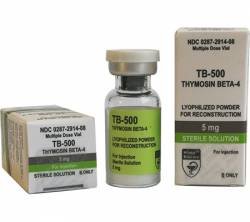IGF-1 (Insulin-like growth factor) is an endocrine hormone that is produced in the liver. The production of IGF-1 is increased in the presence of growth hormone. There are many different types of cells in the body that are equipped with a receptor to accept IGF-1. This makes IGF-1 a good protagonist at targeting tissues to spur cell to cell communication (growth) or in a more autocrine cell signaling process that facilitates cell division.
IGF-1 LR3 allows for many of the growth-promoting effects of growth hormone insulin-like growth factors also know as IGF’s. IGF-1 LR3 comprises a family of peptides that play important roles in mammalian growth and development.
IGF-1 LR3 is also known as Long R3 IGF-1 or Insulin-Like Growth Factor-I Long Arg3. This is a human recombinant, single, non-glycosylated, polypeptide chain containing 83 amino acids. IGF1 mediates many of the growth-promoting effects of growth hormone. The IGF-1 LR3 is a long-term analog of human IGF-1, specifically designed and manufactured for mammalian cell culture to support large-scale manufacturing of recombinant biopharmaceuticals.
IGF-1 LR3 is the primary protein involved in responses of cells to growth hormone (GH): that is, IGF-I is produced in response to GH and then induces cellular activities. One such example is muscle growth or hyperplasia. This compound also makes the human body more sensitive to insulin. It is the most potent growth factor found in the human body. IGF-1 causes muscle cell hyperplasia, which is an actual splitting and forming of new muscle cells.
The most effective form of IGF-1 is considered to be IGF-1 LR3. This formula has been chemically altered to avoid binding to proteins in the human body, and to increase the half life, approximately 20-30 hours.
Only logged in customers who have purchased this product may leave a review.












Reviews
There are no reviews yet.